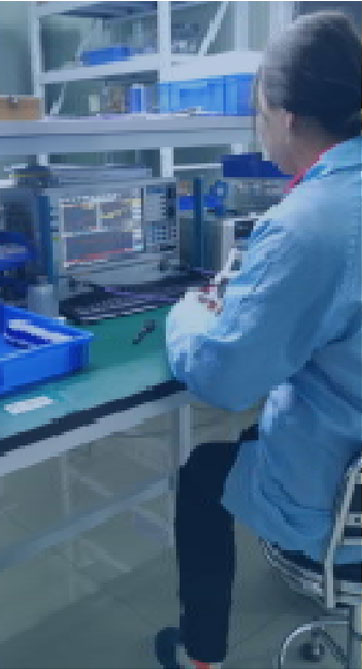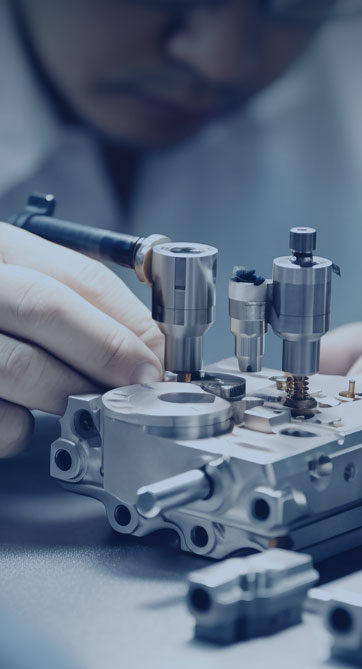
Pin diodes have become a crucial element in high-frequency systems because of their innate electrical traits Their fast toggling behavior plus small capacitance and reduced insertion loss renders them apt for use in switch modulator and attenuator circuits. The basic mechanism behind pin diode switching depends on regulating the device current via an applied bias voltage. Biasing the diode adjusts the depletion region size in the p-n junction, changing its conductive state. Setting different bias levels allows PIN diodes to perform high-frequency switching with minimal distortion
Where timing precision and control matters PIN diodes get implemented into high-level circuit systems They are implemented in RF filtering schemes to enable selective frequency band passage or blockage. Their competency in managing strong signals qualifies them for amplifier power splitter and signal source applications. Miniaturization and improved efficiency of PIN diodes have extended their usefulness across wireless systems and radar platforms
Performance Considerations for Coaxial Switch Engineering
Creating coaxial switches is a challenging task that demands consideration of a variety of technical parameters The performance is governed by the choice of switch type frequency operation and insertion loss properties. A good coaxial switch design aims to minimize insertion loss and maximize isolation across ports
Evaluation focuses on quantifying return loss insertion loss and interport isolation as major metrics. Measurements rely on simulation, theoretical models and experimental test setups. Accurate analysis is crucial to ensure reliable coaxial switch operation across systems
- Simulation packages analytic approaches and lab experiments are commonly applied to analyze coaxial switch designs
- Factors such as temperature variations impedance mismatch and fabrication tolerances can impact switch behavior
- Cutting-edge developments and emerging trends in switch engineering work to improve performance while shrinking size and reducing power usage
LNA Performance Enhancement Techniques
Optimization of LNA gain efficiency and overall performance is critical to achieve excellent signal preservation This requires careful selection of transistors bias conditions and circuit topology. Good LNA design practices focus on lowering noise and achieving high amplification with minimal distortion. Design evaluation relies heavily on simulation and modeling tools to measure noise effects of various choices. The goal is to minimize Noise Figure, reflecting the amplifier’s proficiency in maintaining signal relative to added noise
- Choosing active devices with low noise profiles is a key requirement
- Correctly applied bias conditions that are optimal and suitable are vital for low noise
- Topology decisions critically determine how noise propagates in the circuit
Techniques like impedance matching noise cancellation and feedback control can further elevate LNA performance
Signal Switching Using Pin Diodes

Pin diode based switches enable adaptable and effective RF signal routing in various use cases The semiconducting switches operate at high speed to provide dynamic control over signal paths. The low insertion loss and high isolation of PIN diodes help maintain signal integrity during switching. They find use in antenna selection systems duplexers and phased array antennas
The switching behavior is governed by voltage driven modulation of the diode’s resistance. In the open or deactivated condition the device offers large resistance that prevents signal passage. Applying a forward control voltage lowers the diode’s resistance enabling signal transmission
- Additionally PIN diode switches present fast switching low energy use and compact dimensions
Various PIN diode network configurations and architectural designs can achieve advanced signal routing functions. Strategic interconnection of many switches yields configurable switching matrices for versatile path routing
Measuring the Performance of Coaxial Microwave Switches

Thorough assessment and testing of coaxial microwave switches are necessary to guarantee reliable system operation. Many factors such as insertion reflection transmission loss isolation switching speed and spectrum range govern switch performance. An exhaustive evaluation procedure measures these parameters across varied operating environmental and test conditions
- Furthermore the testing should cover reliability robustness durability and resistance to harsh environmental influences
- Finally results from comprehensive testing offer crucial valuable essential data to inform selection design and optimization of switches for particular applications
LNA Noise Minimization Techniques A Detailed Review
LNA circuits are key elements in RF and wireless systems, amplifying faint signals while minimizing noise additions. This survey offers an extensive examination analysis and overview of approaches to minimize LNA noise. We examine investigate and discuss the fundamental noise sources including thermal shot and flicker noise. We also examine noise matching feedback circuitry and optimal biasing strategies to mitigate noise contributions. The review highlights recent progress in LNA design including new semiconductor materials and circuit concepts that lower noise figures. By elucidating noise reduction principles and applied practices the article aims to be a valuable resource for engineers and researchers building high performance RF systems
High Speed Switching Roles of PIN Diodes

PIN diodes have exceptional unique remarkable properties that suit high speed switching applications Low capacitance combined with low resistance produces rapid switching for applications requiring precise timing. In addition PIN diodes display linear voltage response that supports precise amplitude modulation and switching performance. Versatility flexibility and adaptability enable their suitable applicable and appropriate deployment in many high speed applications Examples include optical communications microwave circuits and signal processing devices equipment and hardware
Integrated Circuit Coaxial Switch Circuit Switching Technology
Integrated coaxial switch circuits offer advancement in signal routing processing and handling across electronic systems circuits and devices. These integrated circuits are tailored to control manage and route signals via coaxial connections with high frequency performance and low insertion latency. Integrated circuit miniaturization creates compact efficient reliable and robust designs favorable for dense interfacing integration and connectivity use cases
- By meticulously carefully and rigorously applying these methods developers can produce LNAs with superior noise performance enabling sensitive reliable electronics By meticulously carefully and rigorously applying these methods developers can produce LNAs with superior noise performance enabling sensitive reliable electronics Through careful meticulous and rigorous implementation of these approaches engineers can achieve LNAs with exceptional noise performance supporting sensitive reliable systems With careful pin diode switch meticulous and rigorous deployment of these approaches developers can accomplish LNAs with outstanding noise performance enabling trustworthy sensitive electronics
- Application fields encompass telecommunications data communications and wireless networking
- Aerospace defense and industrial automation are key domains for integrated coaxial switch technology
- Consumer electronics audio visual equipment and test and measurement systems are typical domains
Considerations for LNA Design at Millimeter Wave Frequencies

Designing for mmWave requires accounting for high attenuation and pronounced noise effects. At these high bands parasitic capacitances and inductances dominate and require careful layout and component selection. Minimizing input mismatch and maximizing power gain are critical essential and important for LNA operation in mmWave systems. Selecting the right active devices including HEMTs GaAs MESFETs and InP HBTs helps secure low noise figures at mmWave. Additionally the development implementation and optimization of matching networks plays a vital role in efficient power transfer and impedance matching. Package-level parasitics should be considered because they may impair LNA function at mmWave. Implementing low-loss transmission lines along with proper ground plane design is essential necessary and important for reducing reflection and ensuring bandwidth
PIN Diode RF Characterization and Modeling Techniques
PIN diodes are vital components elements and parts used throughout numerous RF switching applications. Precise accurate and comprehensive characterization of these devices is essential to support design development and optimization of reliable high performance circuits. The work involves analyzing evaluating and examining electrical characteristics like voltage current resistance impedance and conductance. The characterization includes frequency response bandwidth tuning capabilities and switching speed latency or response time
Moreover additionally furthermore creating accurate models simulations and representations for PIN diodes is crucial essential and vital to forecast behavior in RF systems. Numerous available modeling techniques include lumped element distributed element and SPICE approaches. Model selection is guided by specific application requirements and the desired required expected accuracy
Sophisticated Techniques to Achieve Minimal LNA Noise
LNA design is a critical undertaking that demands precise attention to topology and parts selection to achieve low noise. Recent emerging and novel semiconductor progress has enabled innovative groundbreaking sophisticated design approaches that reduce noise markedly.
Representative methods consist of using implementing and utilizing wideband matching networks selecting low-noise transistors with high intrinsic gain and optimizing biasing schemes strategies or approaches. Additionally furthermore moreover advanced packaging and thermal management techniques are important to lower external noise sources. With careful meticulous and rigorous deployment of these approaches developers can accomplish LNAs with outstanding noise performance enabling trustworthy sensitive electronics
